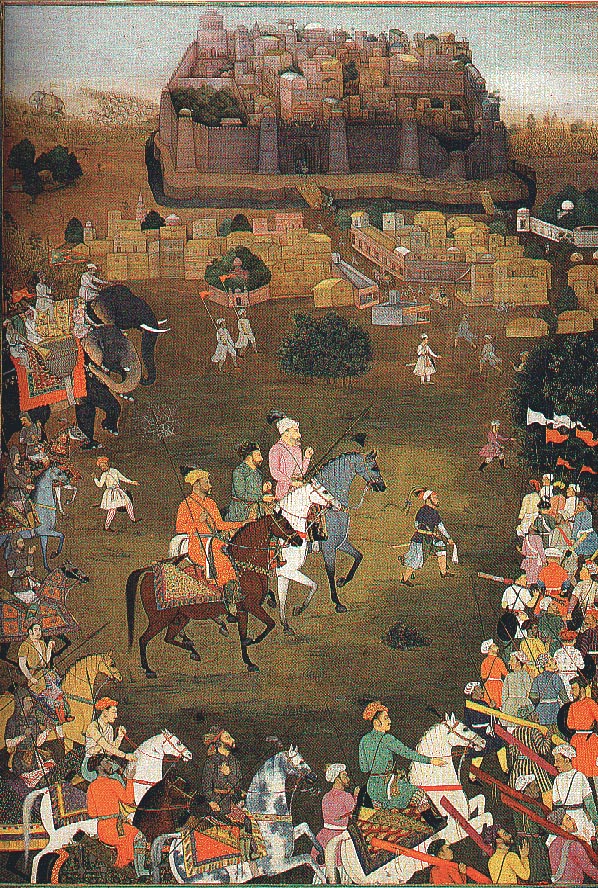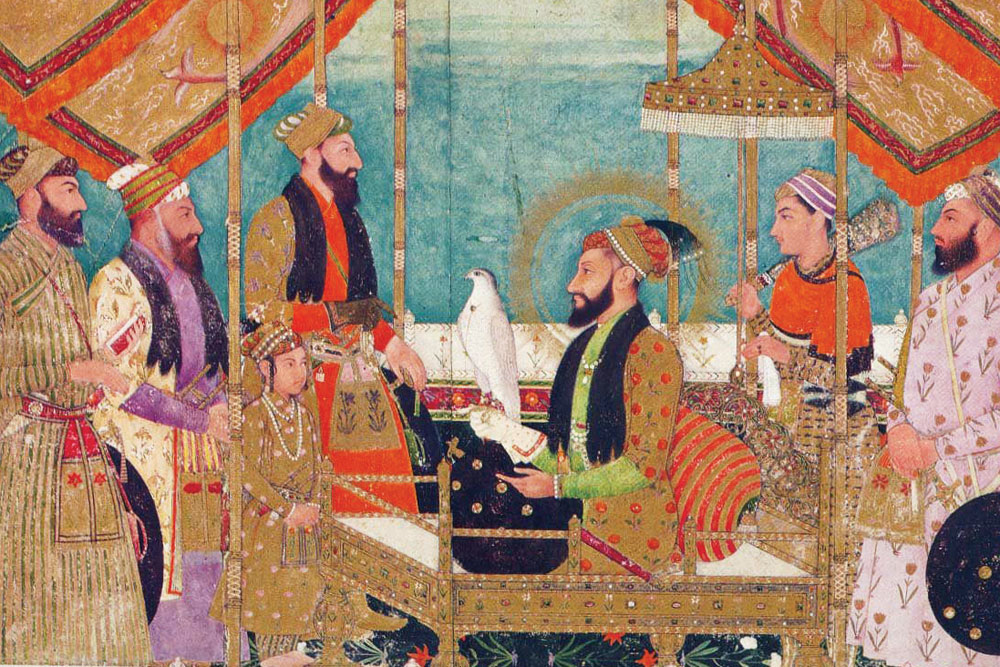Aurangzeb was one of the ablest and more precisely cruelest (in most of the context) of Mughal emperors. However, it can’t be denied that under the Aurangzeb regime the Mughal Empire reached its greatest territorial limits and emerges as the largest single-state ever known in India from the dawn of history to the rise of British power. When we look back at vast literature and historical documentation, most of them are stating Aurangzeb as the cruelest ruler in many contexts whether killing his brother for the throne or putting his ailing father Shahjahan behind the bars or due to religious bigotry (from ordering the demolition of temples to forcing his opponents to accept Islam or death).
He was known for violating war ethics. He was very keen on each and every war against his opponents by using any methods. He was known for creating advanced administration standard which was loosely followed by his heirs or you can say that they failed to achieve that standard resulting in the gradual decline of Mughal Empire.

The early life of Aurangzeb
Aurangzeb was born on 3 November 1618, in Dahod, Gujarat. He was the third son and sixth child of Mughal Emperor Shah Jahan and Mumtaz Mahal. The war of succession among his brothers seemed to inherit from his father as Shahjahan once rebelled against his father Mughal Emperor Jahangir. In June 1626, after an unsuccessful rebellion by his father (Shahjahan), Aurangzeb and his brother Dara Shikoh were kept as hostages under their grandparents’ (Nur Jahan and Jahangir) Lahore court. Jahangir has kept them in Lahore for the next two years. Obviously, they were not treated as slaves or criminals, but they have been kept away from their parents at that tender age.
This might have impacted heavily on the mental condition of eight-year-old Aurangzeb. Aurangzeb might have learned the idea of war among brothers from his father and keeping people as hostages from his grandfather. It was evident that Aurangzeb’s mindset was changed for his brothers and even for his father as well. Shahjahan was officially declared the Mughal Emperor on 26 February 1628. It was then Aurangzeb and his brother were returned to live with his parents at Agra Fort. where Aurangzeb received his formal education in Arabic and Persian. Here the word formal education was related to the study of Islam and History.
The impact of being kept hostage by grandparents and Shahjahan’s act of war of succession with his brother seemed to be visible in the year 1633. In 1633, there was an incident where he escaped from being crushed under the feet of an uncontrolled royal elephant in the Mughal encampment. He bravely rushed towards the elephant and fatally wounded the elephant and saved himself and others as well.

He was awarded money and jewelry by his father and the title of “Bahadur” was also given to him. He called that incident normal and stated the death is normal and death is the only thing from which even emperor can’t save himself, but he was very shameful of the act of his brothers who just saved themselves from elephant leaving others in danger.
Early Military Campaigns and Administration of Aurangzeb
Mughal Emperor Shahjahan was the most incompetent emperor in the Golden times of Mughals. It was his incompetency that created a heavy war among his children for the throne, leaving almost all dead expect Aurangzeb and few who supported him for his throne. Shahjahan has failed the empire in keeping peaceful relations with his neighboring countries, thus resulting in regular and multiple conflicts with them. And for him it was not possible to be present at all fronts of the war, so he decided to appoint his teenage children as the war in charge. Aurangzeb was appointed for the Bundela war at the age of 17.

Aurangzeb was nominally in charge of the force sent to Bundelkhand with the intent of subduing the rebellious ruler of Orchha, Jhujhar Singh, who had attacked another territory in defiance of Shah Jahan’s policy and was refusing to atone for his actions. By arrangement, Aurangzeb stayed in the rear, away from the fighting, and took the advice of his generals as the Mughal Army gathered and commenced the Siege of Orchha in 1635. The campaign was successful and Singh was removed from power.
Aurangzeb as Viceroy of the Deccan
Aurangzeb was appointed viceroy of the Deccan in 1636. After Shah Jahan’s vassals had been devastated by the alarming expansion of Ahmednagar during the reign of the Nizam Shahi boy-prince Murtaza Shah III, the emperor dispatched Aurangzeb, who in 1636 brought the Nizam Shahi dynasty to an end.
In 1637, Aurangzeb married the Safavid princess Dilras Banu Begum, posthumously known as Rabia-ud-Daurani.She was his first wife and chief consort as well as his favorite. He also had an infatuation with a slave girl, Hira Bai, whose death at a young age greatly affected him. In his old age, he was under the charms of his concubine, Udaipuri Bai. The latter had formerly been a companion to his brother Dara Shikoh.
In the same year, 1637, Aurangzeb was placed in charge of annexing the small Rajput kingdom of Baglana, which he did with ease. In 1644, Aurangzeb’s sister, Jahanara, was burned when the chemicals in her perfume were ignited by a nearby lamp while in Agra. This event precipitated a family crisis with political consequences. Aurangzeb suffered his father’s displeasure by not returning to Agra immediately but rather three weeks later. Shah Jahan had been nursing Jahanara back to health at that time and thousands of vassals had arrived in Agra to pay their respects.
Shah Jahan was outraged to see Aurangzeb enter the interior palace compound in military attire and immediately dismissed him from his position of viceroy of the Deccan; Aurangzeb was also no longer allowed to use red tents or to associate himself with the official military standard of the Mughal emperor. Other sources tell us that Aurangzeb was dismissed from his position because Aurangzeb left the life of luxury and became a Faqir.
In 1645, he was barred from the court for seven months and mentioned his grief to fellow Mughal commanders. Thereafter, Shah Jahan appointed him governor of Gujarat where he served well and was rewarded for bringing stability.
As Governor of Balkh
In 1647, Shah Jahan moved Aurangzeb from Gujarat to be governor of Balkh, replacing a younger son, Murad Baksh, who had proved ineffective there. The area was under attack from Uzbek and Turkmen tribes. While the Mughal artillery and muskets were a formidable force, so too were the skirmishing skills of their opponents. The two sides were in stalemate and Aurangzeb discovered that his army could not live off the land, which was devastated by war.
With the onset of winter, he and his father had to make a largely unsatisfactory deal with the Uzbeks, giving away territory in exchange for nominal recognition of Mughal sovereignty. The Mughal force suffered still further with attacks by Uzbeks and other tribesmen as it retreated through the snow to Kabul. By the end of this two-year campaign, into which Aurangzeb had been plunged at a late stage, a vast sum of money had been expended for little gain.
Further inauspicious military involvements followed as Aurangzeb was appointed governor of Multan and Sindh. His efforts in 1649 and 1652 to dislodge the Safavids at Kandahar, which they had recently retaken after a decade of Mughal control, both ended in failure as winter approached. The logistical problems of supplying an army at the extremity of the empire, combined with the poor quality of armaments and the intransigence of the opposition have been cited by John Richards as the reasons for failure, and the third attempt in 1653, led by Dara Shikoh, met with the same outcome.
He became viceroy of the Deccan again after he was replaced by Dara Shukoh in an attempt to recapture Kandahar. Aurangzeb regretted this and harbored feelings that Shikoh had manipulated the situation to serve his own end. Aurangabad’s two jagirs (land grants) were moved there as a consequence of his return and, because the Deccan was a relatively impoverished area, this caused him to lose out financially. So poor was the area that grants were required from Malwa and Gujarat in order to maintain the administration and the situation caused ill-feeling between father and son.
Shah Jahan insisted that things could be improved if he made efforts to develop cultivation. Aurangzeb appointed Murshid Quli Khan to extend to the Deccan the zabt revenue system used in northern India. Murshid Quli Khan organized a survey of agricultural land and a tax assessment on what it produced. To increase revenue, Murshid Quli Khan granted loans for seed, livestock, and irrigation infrastructure. The Deccan returned to prosperity, but too slowly to satisfy the emperor.
War with Qutub Shahis & Adil Shahis
Aurangzeb proposed to resolve the situation by attacking the dynastic occupants of Golconda (the Qutb Shahis) and Bijapur (the Adil Shahis). As an adjunct to resolving the financial difficulties, the proposal would also extend Mughal influence by accruing more lands. Aurangzeb advanced against the Sultan of Bijapur and besieged Bidar. The Kiladar (governor or captain) of the fortified city, Sidi Marjan, was mortally wounded when a gunpowder magazine exploded.
After twenty-seven days of hard fighting, Bidar was captured by the Mughals and Aurangzeb continued his advance. Again, he was to feel that Dara had exerted influence on his father: believing that he was on the verge of victory in both instances, Aurangzeb was frustrated that Shah Jahan chose then to settle for negotiations with the opposing forces rather than pushing for complete victory.

